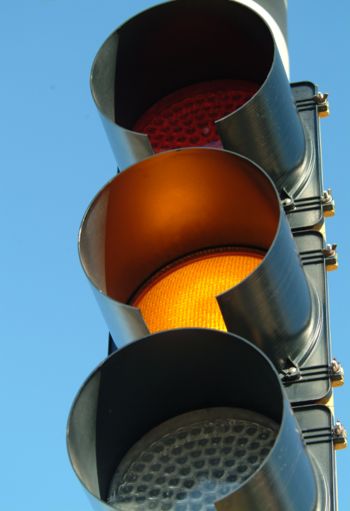Category:902 Signals: Difference between revisions
No edit summary |
m Link to the new 902.13 article (information from General Construction manual) |
||
| Line 14: | Line 14: | ||
This article provides the [[902.1 Basis for Installation|basis for installation]] of traffic signals, discusses [[902.3 Basic Types of Signal Control| basic types of signal control]] equipment and hardware, their characteristics, uses, applications, [[902.8 Signal Operations and Maintenance|operations and maintenance]]. The policies, standards and guidelines set forth herein are in general accordance with [http://mutcd.fhwa.dot.gov/pdfs/2003r1/pdf-index.htm the ''Manual on Uniform Traffic Control Devices''] most recent edition and the subsequent rulings on requests for interpretations, changes, and experimentation, herein referred to as the ''MUTCD''. Clarification, elaboration, or the elimination of options of the individual items, is contained herein so that conformity of application will be promoted in Missouri. | This article provides the [[902.1 Basis for Installation|basis for installation]] of traffic signals, discusses [[902.3 Basic Types of Signal Control| basic types of signal control]] equipment and hardware, their characteristics, uses, applications, [[902.8 Signal Operations and Maintenance|operations and maintenance]]. The policies, standards and guidelines set forth herein are in general accordance with [http://mutcd.fhwa.dot.gov/pdfs/2003r1/pdf-index.htm the ''Manual on Uniform Traffic Control Devices''] most recent edition and the subsequent rulings on requests for interpretations, changes, and experimentation, herein referred to as the ''MUTCD''. Clarification, elaboration, or the elimination of options of the individual items, is contained herein so that conformity of application will be promoted in Missouri. | ||
There are many aspects to be considered when inspecting construction quality and this article provides [[902.13 Construction Inspection Guidelines for Sec 902|construction inspection guidelines]]. | |||
This article has a [[902.12 Glossary|glossary]] and also relates to: | This article has a [[902.12 Glossary|glossary]] and also relates to: | ||
Revision as of 09:06, 29 March 2007

| Key Points |
Traffic signals are electrically powered traffic control devices that warn or direct vehicular and pedestrian traffic to take some specific action. Traffic signals provide for the orderly assignment of right of way to conflicting traffic movements at intersections.
Traffic signals are not a complete solution for traffic problems. Traffic signals can sometime create additional congestion and cause additional delay to vehicles if improperly designed, installed, or maintained. Correctly designed and operated traffic signals installed at warranted locations will provide for the orderly movement of traffic, increase the intersection capacity, and in some instances, tend to reduce accidents. Coordinating and phasing and timing signals are very important.
Traffic signals are listed on the Highway Right of Way and Construction Program in the description of the type of improvement if there is a probability of future signal control. If signals cannot be justified, they are to be eliminated from the program at the earliest possible date.
This article provides the basis for installation of traffic signals, discusses basic types of signal control equipment and hardware, their characteristics, uses, applications, operations and maintenance. The policies, standards and guidelines set forth herein are in general accordance with the Manual on Uniform Traffic Control Devices most recent edition and the subsequent rulings on requests for interpretations, changes, and experimentation, herein referred to as the MUTCD. Clarification, elaboration, or the elimination of options of the individual items, is contained herein so that conformity of application will be promoted in Missouri.
There are many aspects to be considered when inspecting construction quality and this article provides construction inspection guidelines.
This article has a glossary and also relates to:
- flashers and signals for schools and other special applications
- signal indications and signing
Articles in "902 Signals"
The following 21 pages are in this category, out of 21 total.
9
- 902.1 General (MUTCD Chapter 4A)
- 902.2 Traffic Control Signals (MUTCD Chapter 4B)
- 902.3 Traffic Control Signal Needs Studies (MUTCD Chapter 4C)
- 902.4 Signal Installations and Equipment
- 902.5 Traffic Control Signal Features (MUTCD Chapter 4D)
- 902.6 Pedestrian Control Features (MUTCD Chapter 4E)
- 902.7 Pedestrian Hybrid Beacons (MUTCD Chapter 4F)
- 902.8 Traffic Control Signals and Hybrid Beacons for Emergency Vehicle Access (MUTCD Chapter 4G)
- 902.9 Traffic Control Signals for One-Lane, Two-Way Facilities (MUTCD Chapter 4H)
- 902.10 Traffic Control Signals for Freeway Entrance Ramps (MUTCD Chapter 4I)
- 902.11 Traffic Control for Schools
- 902.12 Flashing Beacons (MUTCD Chapter 4L)
- 902.13 Lane-Use Control Signals (MUTCD Chapter 4M)
- 902.14 In-Roadway Lights (MUTCD Chapter 4N)
- 902.15 Designing a Traffic Signal
- 902.16 The Mobility Plan – Effective Arterial Management
- 902.17 Execution of Contracts for Signal or Flasher Installation
- 902.18 Glossary
- 902.19 Construction Inspection Guidelines for Sec 902
- 902.20 Material Inspection for Sec 902
- 902.21 Laboratory Testing Guidelines for Sec 902